Your cart is currently empty!
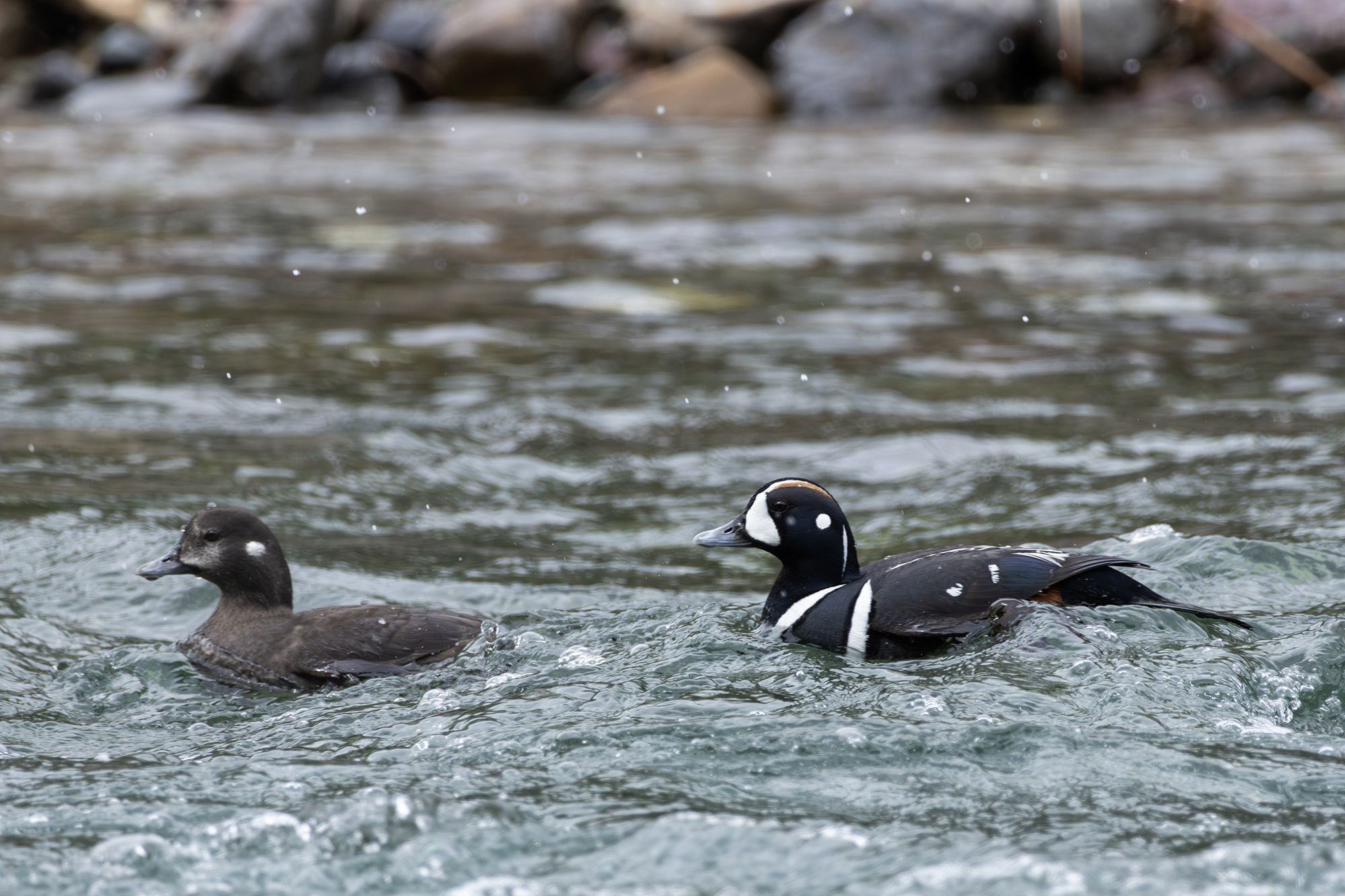
The Clowny Ducks
—
by

“I’ve got two ducks” cracked the radio. “I’m on my way” I replied back to Ava. We were leapfrogging each other as we worked up McDonald Creek to always have eyes on the water as we surveyed up for this small, charismatic Harlequin Duck. Each spring, the ducks begin their unique west-to-east migration from the surf of the ocean back to the whitewater creeks of the mountains to breed. Creeks in Glacier National Park provide a perfect place to do so.
The park service has an ongoing project, funded by the Glacier National Park Conservancy, to monitor Harlequin Ducks. This monitoring project is helping us understand their lifecycles, habits, and impacts that climate variables and park visitors have on them with the goal of being able to help them however we can. They do this through ground based surveys as we were doing as well as pioneering some new techniques using eDNA* or environmental DNA.
I’ve been fortunate enough to work on these projects throughout the years from monitoring, eDNA collecting, banding, etc. Each time we go out, it’s like a scavenger hunt and we all get (way too) excited when we find them. On Tuesday, May 2nd, I went out to do what we call the “upper stretch” of McDonald Creek which was from Avalanche Creek to Logan Creek.
As we started driving up along Lake McDonald, it was snowing on us. By the time we got out of the vehicle, it had essentially stopped, but the rain/snow mix from the night before, although lovely, was dripping like crazy. This necessitated full rain gear as we approached the creek. We looked up and down the creek, then began the leapfrog. Ava left me creekside as she went up towards the gorge. I gave her a couple of minutes to get into position, then headed her way.
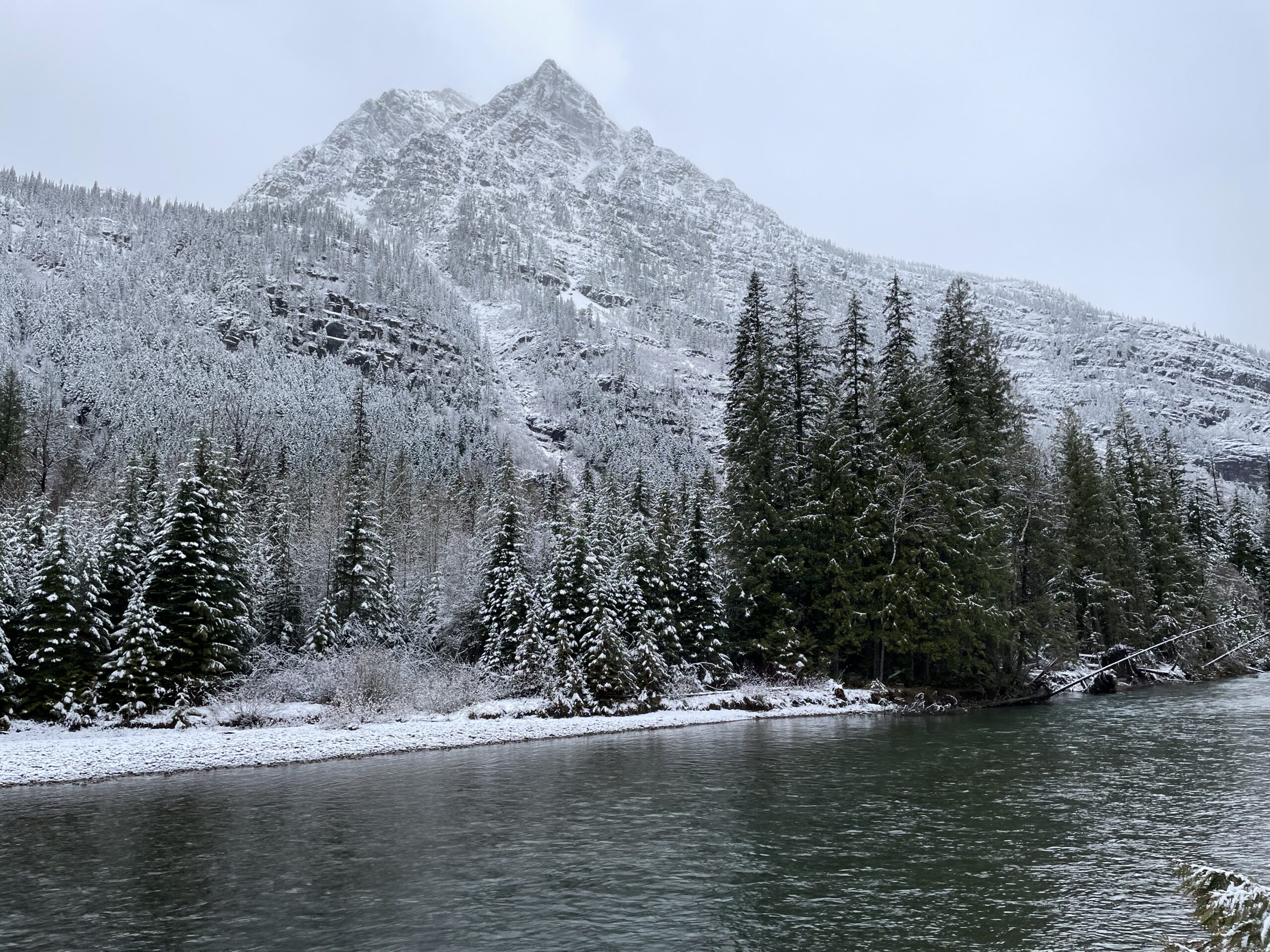
As I passed, I hollered out to alert my passing, then went to the rocks overlooking the gorge, waved, then she went around. While I waited for her, I looked for ducks, listened to Varied Thrushes singing, and admired the deep, clear, blue-green waters that flowed between the red rocks. The new snow made the rocks sketchy, but with care, they were still navigable. Fresh snow blanketed the peaks above us, giving a black and white background to the vibrant colors at my feet.
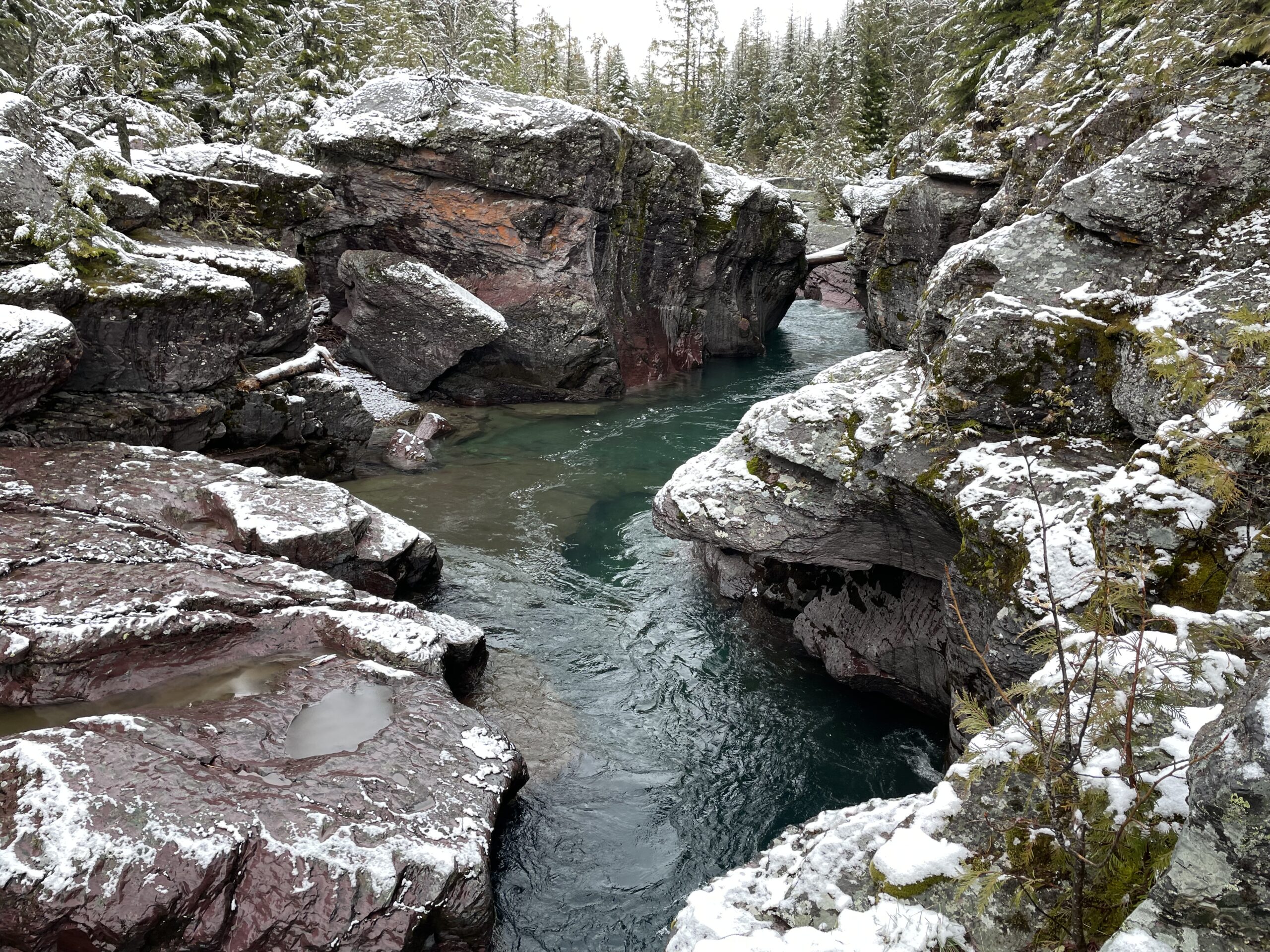
We continued along listening to spring songs of Fox Sparrows, kinglets, and robins and didn’t catch our first sight of Harlequins until Ava spotted the first one at Red Rocks and radioed me. As I was hustling to join here, eight smaller ducks flew up the creek and dove down around the overlook and I radioed Ava again as I was unsure of what they were (and didn’t want her to miss them).
When I arrived, Ava was recording data about the two males that she saw. The eight ducks were Buffleheads (one male and seven females) who hung out near one of the male Harlequins. He graciously hopped up on the rock and allowed us to confirm that he had no leg bands which is important information. The biologists have been banding the ducks to be able to track who is who to get a better idea of their lifecycle.
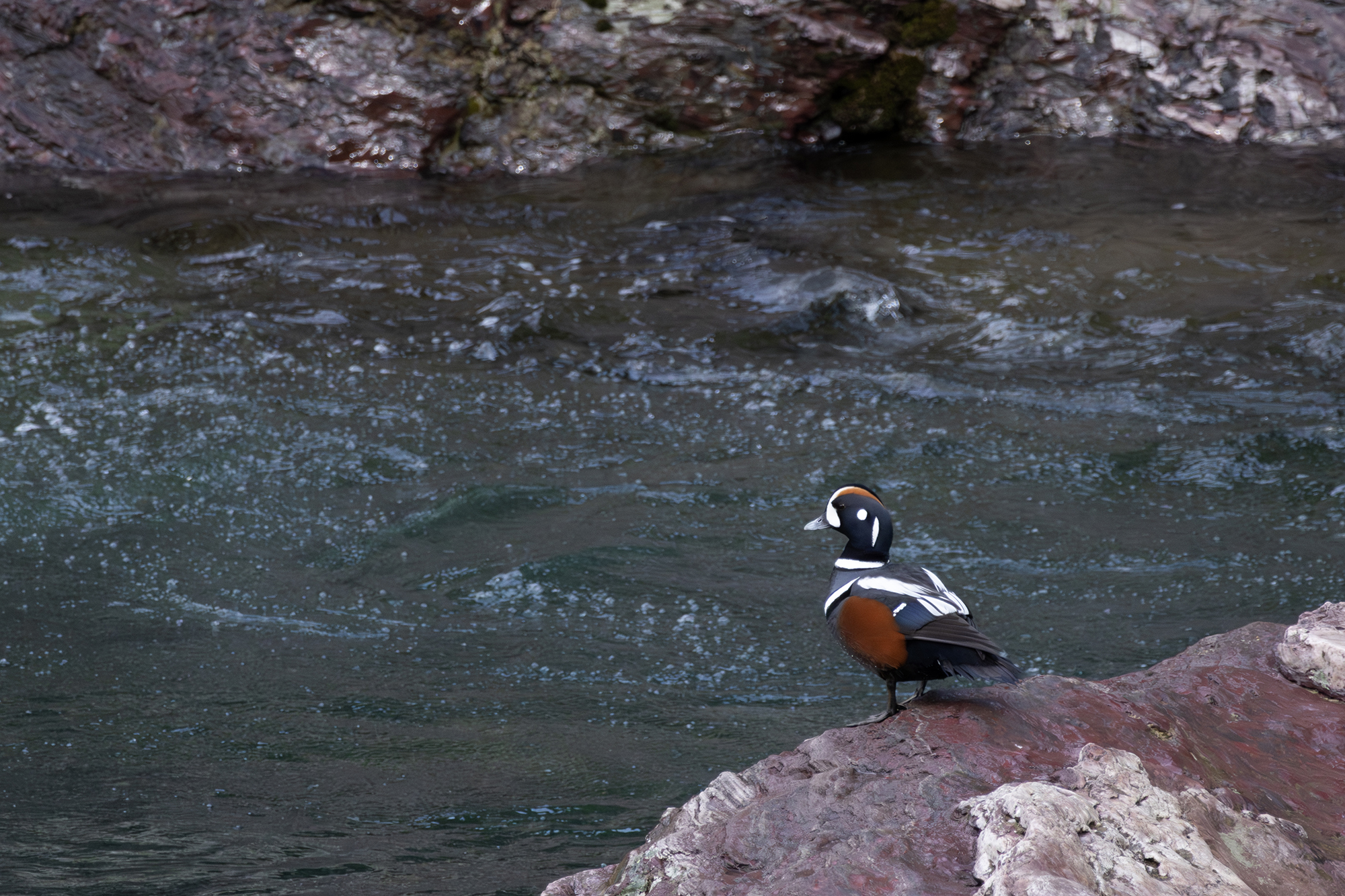
We spotted the one above us.. which turned out to be two! After a little bit of feeding (they are diving ducks that feed on invertebrates moving around the rocks in the water), they too climbed up on some rocks and allowed us to confirm that none of them were banded either.
I moved up ahead, as it was my turn to leapfrog, and spied the pair of males from above. They took off upstream and, while waiting for Ava to leapfrog me, I spied another male feeding. I suspected it was a new male and not one of the males that had taken off as it seemed unlikely they’d landed and one had floated down so quickly. It’s important that we don’t double count ducks and we’re always keeping track of any ducks that fly upstream past us. Anyway, we noted that and continued upstream.
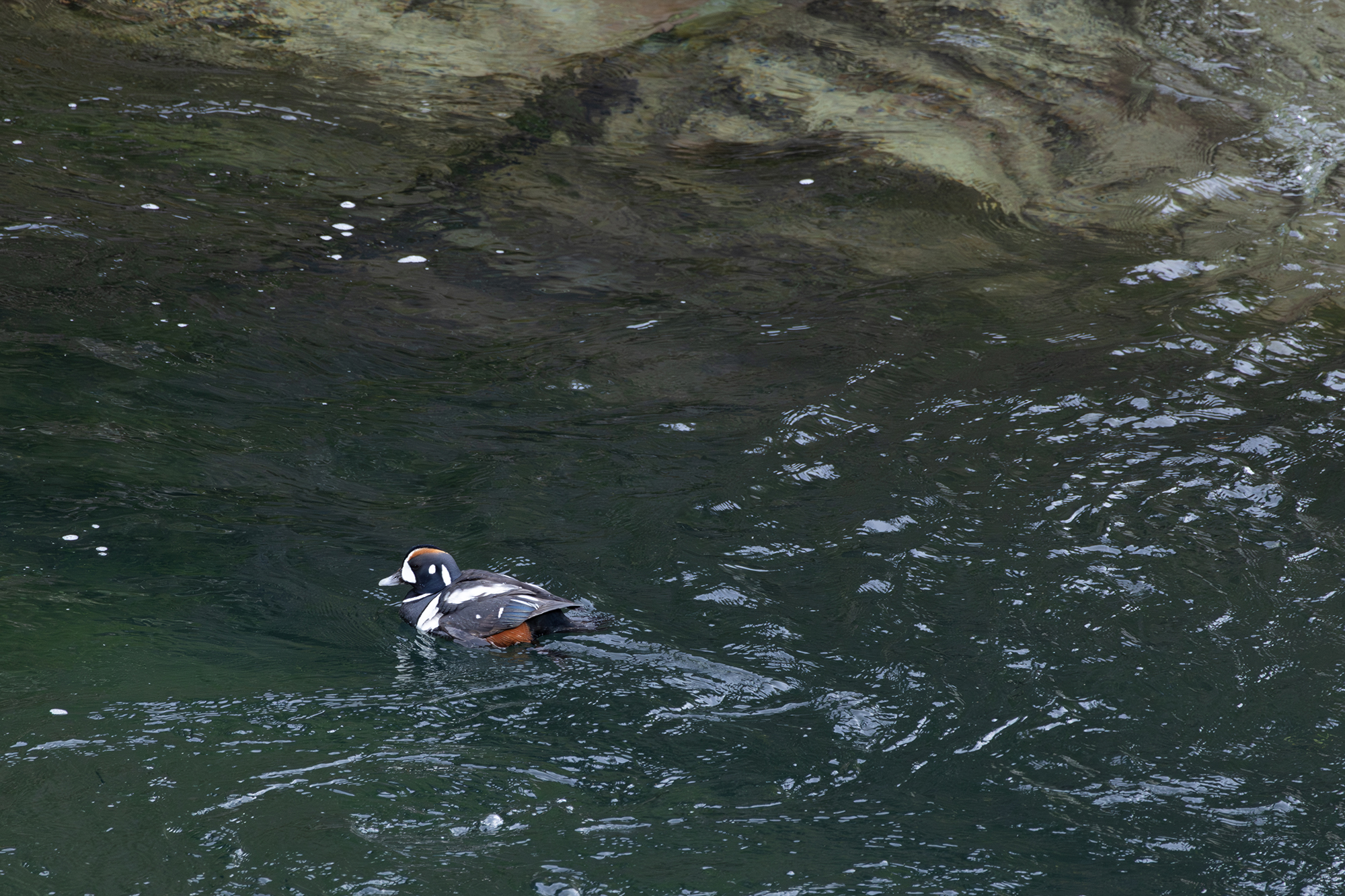
We later found the two males again as the sun began to break through the clouds turning a beautiful day into a splendid one. The next stretch involved much more bushwhacking and the going is much slower, but we were rewarded with a male/female pair, floating down the creek and feeding. During a brief bout of preening, I was able to take a couple pictures of the silver band on the female. When banding Harlequins in Glacier, a blue band with big, white letters/numbers is placed on their left leg while a smaller USGS band is placed on their right leg. I was fortunate to catch the last three digits of the band code which Lisa Bate, the park biologist in charge of the study, was able to ID her as a bird banded when she was a hatchling in 2016. So fun!

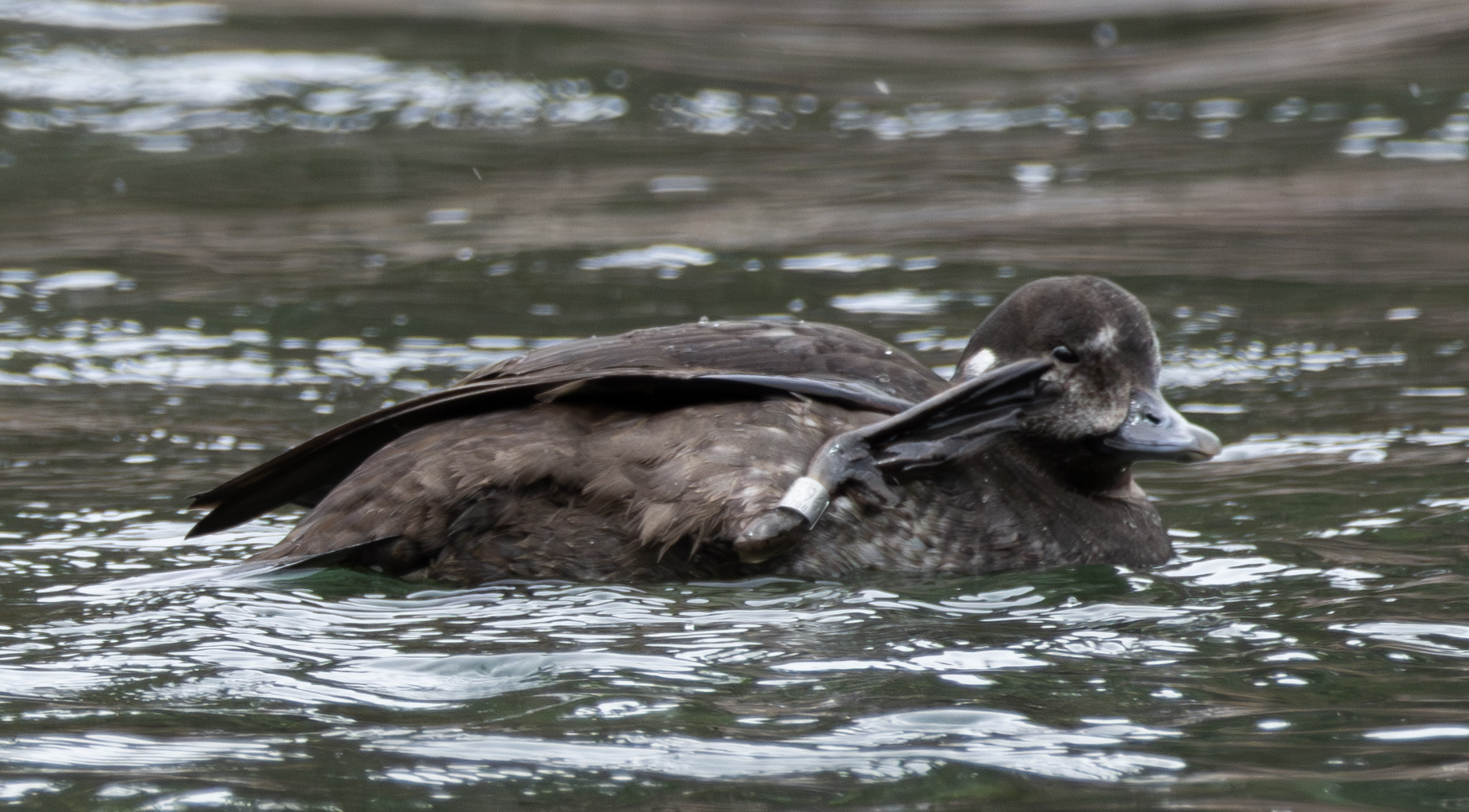
Above the two of them, we found one more male that flew down the stream. The ensuing surveys should give us more females as they arrive with their partners to nest. As they’ve learned, females return to their natal stream (or the stream they were born on) to breed. Keeping this population going is super important as we want them to continue to show up! It is unknown if they would repopulate if the population were to crash. Banding the birds and keeping track of them helps us understand their population trends as well as who ends up where.
Later in the year, I’ll head back out to continue helping with the eDNA study headed by Holli Holmes. It’s so fun to get out in the Park knowing that I’m potentially helping a population of one of the animals I love.
* eDNA, or environmental DNA is DNA left behind in the environment by living organisms. While not useful for identifying individuals, it’s great for presence monitoring of species. Samples are collected in water or snow, filtered, then sent to a lab where they analyze the collection for presence of any DNA, try to identify it, then apply levels of probability of their certainty of the species.
This sort of collection is used by collecting snow for winter carnivores, streams for fish such as the native Bull Trout, and now for Harlequins. In hard to access locations such as mountain creeks, this sort of collection will hopefully allow scientists to find new locations of species without having to go through extraordinary lengths of bushwhacking. It also provides a budget-friendly alternative to having larger teams of people to survey many streams taking many days.
Comments
3 responses to “The Clowny Ducks”
-
Thanks! I saw my Harlequin duck in Yellowstone in 2014.
-
Oh cool! Which creek? I saw some down there on Tower Creek if my memory serves me correctly.
-
-
I have looked for Harlequins at LeHardy Rapids on the Yellowstone River. But had no luck.


Leave a Reply